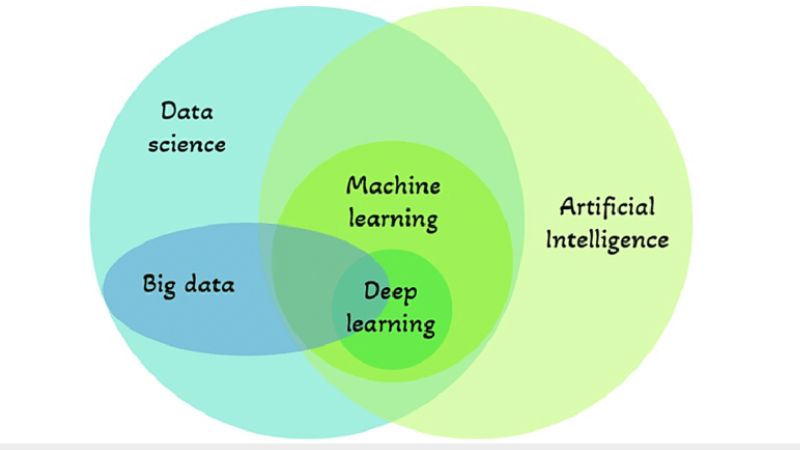In today’s fast-evolving digital landscape, understanding and leveraging critical technology elements (CTEs) is paramount for organizations striving to stay ahead of the curve. CTEs are the building blocks that underpin technological advancements, driving progress across various industries. This article delves into the key aspects of critical technology elements, exploring their significance, applications, and future prospects.
Understanding Critical Technology Elements
Critical technology elements are foundational technologies essential for the development and enhancement of advanced systems and applications. These elements often involve cutting-edge innovations that drive performance, efficiency, and capabilities. They are indispensable for both current technologies and future advancements, influencing sectors such as aerospace, defense, telecommunications, and healthcare.
Key Critical Technology Elements and Their Impact
1. Artificial Intelligence and Machine Learning
Artificial Intelligence (AI) and Machine Learning (ML) have revolutionized the way we process data, make decisions, and interact with technology. These technologies enable systems to learn from data, identify patterns, and make informed decisions with minimal human intervention. AI and ML are pivotal in developing autonomous systems, predictive analytics, and personalized user experiences.
2. Quantum Computing
Quantum computing represents a significant leap forward in computational power. Unlike classical computers, which use bits to process information, quantum computers utilize quantum bits (qubits). This allows them to perform complex calculations at unprecedented speeds. Quantum computing holds promise for solving problems that are currently intractable for classical computers, such as cryptographic analysis, material science simulations, and large-scale optimization problems.
3. Advanced Materials
The development of advanced materials, such as nanomaterials, graphene, and smart materials, is crucial for enhancing the performance and durability of various technologies. These materials offer unique properties, such as increased strength, flexibility, and conductivity, which are vital for applications in electronics, aerospace, and medical devices.
4. Internet of Things (IoT)
The Internet of Things (IoT) refers to the interconnected network of physical devices embedded with sensors, software, and other technologies. IoT enables these devices to collect and exchange data, facilitating improved monitoring, control, and automation of systems. IoT applications span numerous fields, including smart cities, industrial automation, healthcare monitoring, and environmental conservation.
5. Biotechnology
Biotechnology merges biological processes with technological advancements to develop innovative solutions in healthcare, agriculture, and environmental management. Techniques such as CRISPR gene editing, synthetic biology, and bioprinting are transforming fields like personalized medicine, sustainable agriculture, and biofuels.

The Strategic Importance of Critical Technology Elements
1. Driving Innovation and Competitiveness
Organizations that effectively integrate critical technology elements into their operations can significantly enhance their innovative capabilities and competitive edge. By staying abreast of technological trends and advancements, businesses can develop new products, optimize processes, and enter new markets more efficiently.
2. Enhancing Operational Efficiency
CTEs enable organizations to streamline their operations through automation, improved data analytics, and optimized resource management. For instance, AI and IoT can automate routine tasks, reduce human error, and provide real-time insights, leading to cost savings and increased productivity.
3. Ensuring Security and Resilience
As technology becomes more integral to various aspects of life, ensuring the security and resilience of critical systems is paramount. Quantum computing and advanced cryptographic techniques offer enhanced security measures, while IoT and AI can improve system monitoring and threat detection capabilities.
Challenges in Implementing Critical Technology Elements
1. Technical Complexity
The implementation of CTEs often involves overcoming significant technical challenges. Quantum computing, for instance, requires maintaining qubits in a state of superposition, which is highly sensitive to environmental disturbances. Similarly, AI and ML models require vast amounts of data and computational power for training and deployment.
2. Ethical and Regulatory Considerations
The rapid advancement of technologies such as AI, biotechnology, and IoT raises ethical and regulatory concerns. Issues such as data privacy, algorithmic bias, and the ethical implications of genetic modifications need to be carefully managed to ensure responsible development and deployment of these technologies.
3. High Costs and Resource Requirements
Developing and implementing CTEs often demand substantial financial investments and specialized resources. Organizations must allocate funds for research and development, acquire cutting-edge equipment, and hire skilled personnel. Balancing these costs with potential benefits is a critical consideration for businesses and governments alike.
Future Prospects of Critical Technology Elements
1. Accelerating Technological Convergence
The future of critical technology elements lies in the convergence of multiple technologies to create synergistic solutions. For example, integrating AI with IoT can lead to the development of smart systems capable of autonomous decision-making and adaptive learning. Similarly, combining quantum computing with advanced materials can unlock new possibilities in computational chemistry and materials science.
2. Transforming Industries
CTEs will continue to transform various industries by enabling the creation of innovative products and services. In healthcare, AI and biotechnology can lead to breakthroughs in disease diagnosis and treatment. In manufacturing, advanced materials and IoT can enhance production efficiency and product quality.
3. Addressing Global Challenges
Critical technology elements have the potential to address some of the most pressing global challenges, such as climate change, energy sustainability, and food security. For instance, advancements in biotechnology can lead to the development of sustainable biofuels, while AI-driven climate models can improve our understanding and mitigation of environmental impacts.
Conclusion
Critical technology elements are the cornerstones of modern technological progress. By understanding and leveraging these elements, organizations can drive innovation, enhance operational efficiency, and address global challenges. As we look to the future, the strategic integration of CTEs will be crucial in shaping a more advanced, secure, and sustainable world.



